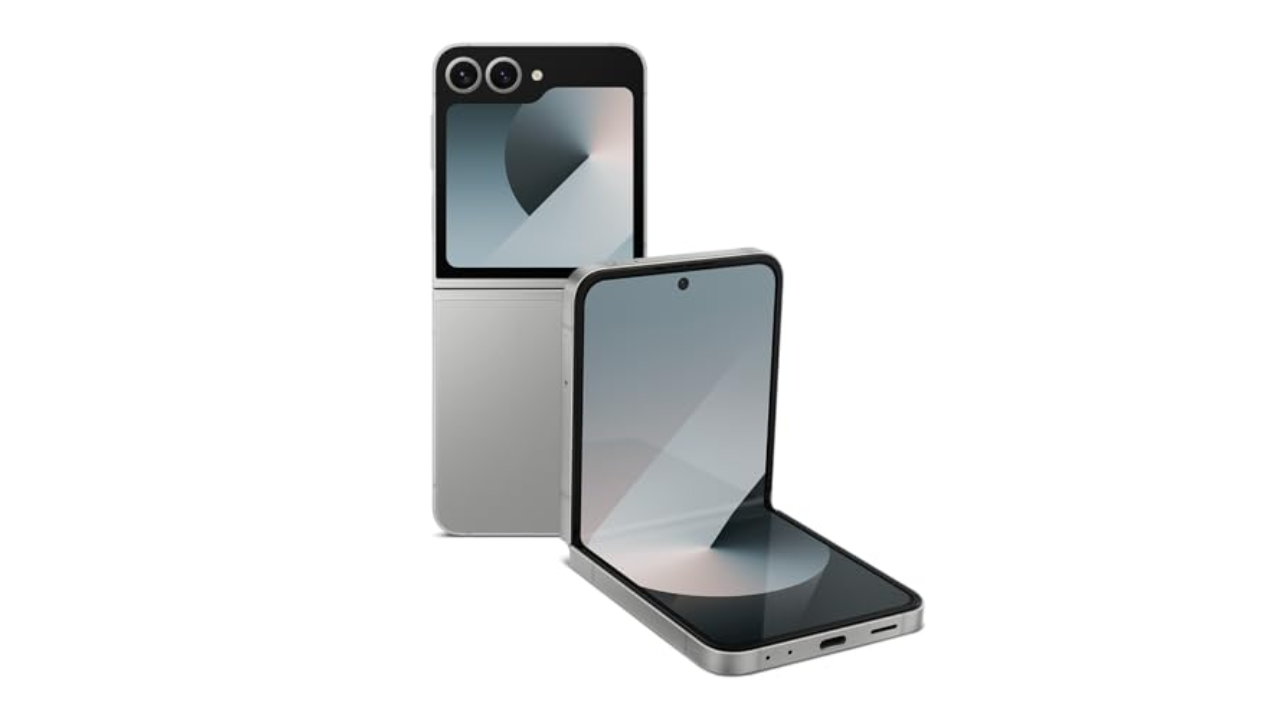Tech
Samsung Galaxy Flip 6 review: A slightly better foldable aimed at everyone
Samsung’s Galaxy Z Flip series has always tempted me more than the Z Fold. Maybe it’s the flip-phone nostalgia taking hold; maybe it’s the fact that I don’t want to watch video inside a square; maybe it’s simply the Z Flip’s more palatable price.
The Z Flip series has launched in tandem with the Z Fold for several years, but often with specifications that put it around the bottom of each flagship family, including the traditionally shaped Galaxy S family. That changes this year, with Samsung addressing some of the Z Flip 5’s biggest shortcomings: battery life and middling cameras.
It’s a good thing too. As we mentioned in our Z Fold 6 review, there’s more foldable competition than ever. In fact, in the face of Motorola’s most recent foldables, while Samsung is doing something, is it enough?
While Z Flip 6’s design has remained largely the same, Samsung made several under-the-hood upgrades this year, with improved battery life and cameras. It makes the best case yet for mainstream foldables, but the company could do more, especially when utilizing the secondary front screen.
- Better cameras
- Longer battery life
- Fun generative AI tricks
- More expensive than its predecessor
- Design is almost identical to last year
- Limited front-screen utility
- Sluggish charging
Design and display
You’d be hard-pressed to tell the difference, visually, between the Z Flip 6 and last year’s Z Flip 5, with only some minor design changes. The upgraded camera array now has a metal edge around each lens, and the sides are flatter this year, in line with the design of other 2024 Galaxy devices. There’s alo a largely imperceptible reduction in thickness when the device is closed too, likely down to a newer hinge design. Compared to my year-old Z Flip 5, the crease seems once again even less visible this year.
While and display sizes and resolutions remain the same, the main screen on the Z Flip 6 tops out at 2,600 nits, compared to the 1,750 nits of the Z Flip 5’s display. Samsung claims this is its brightest foldable display yet, and it’s more than enough to handle temperamental summer weather here in the UK. It’s another crisp, smooth, beautiful flexible AMOLED.
The Z Flip 6’s cover display is the same size, brightness and resolution as its predecessor. Does it look as good as the Moto Razr 50 Ultra? In my opinion, no, but there’s enough screen space to read notifications, frame your photos and even watch videos.
Also, if you’re worried about screen toughness on your new foldable, Samsung’s new Z Assurance program is worth noting. It offers a free one-time replacement of Samsung’s factory-installed screen protector on the Z Flip 6 and even a one-time discount on screen replacement if the very worst should happen.
When it comes to utility, despite more widget support (and space for more of them), the Z Flip 6’s Flex Window doesn’t do enough. Notifications are still a swipe away, and the expansive screen (introduced last year) offers enough space to take selfies with the device without unfolding it.
Samsung’s software innovations, like AI-powered translation, take advantage of the dual-screen Z Flip 6, showing both parties what’s being said. It’s generally pretty accurate, and combining audio and text should help reduce misunderstandings and mistranslations.
Galaxy AI powers new photography features tied to the cover display, too. AutoZoom takes at least some of the guesswork out of framing when setting up the Z Flip to take a timed photo or record video without direct supervision, and it works well, cramming in friends or cropping your surroundings to focus in on your group. Editing and modifying the Flex Window is still unnecessarily complicated. Other features are buried away in the Labs section of settings, and there are not enough widgets for a device on its fifth iteration. (Samsung never launched a Z Flip 2.)
But, when other flip foldables offer a truncated version of your home screen, and can (with mixed success) run most apps, some new widgets aren’t enough. Fortunately, Samsung’s Labs settings can run a handful of apps on the cover screen, including YouTube, Netflix, WhatsApp, and Google Maps. It’s a start, but if the cover display can handle streaming video, surely I could get a Kindle reading app, or a stripped-down version of Chrome. I wish Samsung had pushed it further. (There are some tools and apps to work around this, many Galaxy Z Flip users swear by Good Lock, but I don’t want to have to work around this constraint.)
The Z Flip 6 also gets a RAM upgrade this year, up to 12 gigs from 8GB last year. Like the Galaxy Z Fold 6 and S24, it has a powerful Snapdragon 8 Gen 3 processor, and I didn’t notice any performance issues during testing.
Cameras
The primary camera sensor on this year’s Z Flip has finally been upgraded to 50 megapixels, putting it on par with this year’s Galaxy S24. It’s better, sure, but doesn’t quite match the capabilities of leading camera phones like the Pixel 8 Pro, S24 Ultra, or iPhone 15 Pro.
Pitting the Z Flip 6 against the Z Flip 5, I was surprised how often the images pretty much matched each other. Predictably, if I chose to shoot on the Z Flip 6 in full 50-megapixel stills, that offered more fidelity than the Z Flip 5. If I shot in 12MP on the Z Flip 6, there often was little difference between the two foldables. The newer phone was less prone to blowing out an entire image when everything was brightly lit. At the same time, it’s more reliable in low-light situations, especially when you choose the 12MP setting, letting the phone process those extra pixels for a more detailed shot. The Z Flip 6 seemed more capable of pulling out finer detail, whether that was blades of grass or the soft outline of this patient dog.
A bigger benefit of that bigger sensor is that the Z Flip 6 can zoom in by cropping the 50MP image to a 12MP one. You can capture a nice image at 2x and even 4x zoom, without a dedicated telephoto lens.
Unsurprisingly, thanks to Samsung’s processing, the higher-resolution sensors in the Z Flip 6 perform better in low light than last year’s model. Samsung’s imaging processing occasionally got a little too aggressive, with clothing and skylines often marred by crinkly lines and artifacts. It’s not really a leap beyond the Z Flip 5’s cameras, but it wasn’t a terrible imaging setup in the first place. This form factor ensures that you’re using these high-resolution cameras for any selfies or video calls, meaning nothing else comes close in quality.
Galaxy AI features come to foldables
Samsung’s Galaxy AI software lands on its foldables this year, and the company continues adding and refining. Alongside Chat Assist for writing texts and emails, the fantastic Google Circle to Search is here, making it easier to investigate practically anything you’re looking at on your phone. It’s the camera features I’ve been most impressed with – and were pretty much the only Galaxy AI tricks I used with any regularity.
Samsung’s improved AI photo editing tools are easy to use and right where you need them to be. Once you open a photo, you tap on Samsung’s AI sparkle icon, and select objects by circling them. You can then delete your selection or move it into a better position and, with another tap of the AI button, let Samsung’s AI fill in the gaps.
In complete contrast to the laborious widget menus and settings for the front display, it’s so easy to use and does what you want it to. After your AI nips and tucks, there’s a ‘view original’ button to compare your images.
Then there’s Sketch to image, a delightful distraction. Making a few cursory lines, or attempt to draw something specific, and Galaxy AI will generate an object and apply it to your photo, often in a photo-realistic way. Sometimes, it even nails it.
Galaxy phones will add an “AI-generated content” watermark, but the bigger signs of AI objects and editing were scale (hi, giant goose), blurry outlines or the rules of physics.
I was surprised at how capable Sasmung’s image generation was. Sketching a ghost (successfully!) behind a mesh barrier generated my spook behind the barrier. It would also apply appropriate light shading and shadows for some uncannily accurate results. That dog picture earlier? There was no ball there. Also: multiple photorealistic white hats. It was a shame I couldn’t change the color of these items, or offer some text-based guidance to recognize my scribbles. It’s a gimmick, sure, but it’s a good one. I’m still using it a lot, days later. It’s a lot of fun.
Not all the AI features are that successful: Portrait Studio will automatically detect images of people and offer multiple AI-generated drawings/ sketches and 3D renders, all of which make me look like all the other white male tech journalists who wear glasses. Which is harsh, but fair.
Battery life: Better, not great
The Z Flip 6 packs a bigger 4,000mAh battery, and the Z Flip series’ biggest weakness has been lasting an entire day, especially under heavy use. The Z Flip 6 scrapes through here. Using it as my main phone, it always lasted through a day of heavy use, with around 10 percent left at around 10PM. I would still keep a charger on me, anxious that I might not make it through an evening.
On our video rundown test, it lasted over 13 hours of playback on the main screen. Sadly, the frustratingly slow charge speed is still here. The Z Flip 6 can charge up to 25W, and after years of higher charge rates, I felt it took its time to recharge. From empty, it took two hours to top up fully. For comparison, the S24 Ultra can charge at up to 45W, and the Pixel 8 Pro can charge at up to 40W. I think this would also be less of an issue if I weren’t worried about the Z Flip 6’s battery going the distance.
Foldables have typically taken lower power input over the years, likely due to how battery cells are arranged inside a foldable device. However, if the 2024 Motorola Razr+ can handle 45W, why can’t the Z Flip 6?
Wrap-up
Samsung’s Z Flip series remains the most realistic flagship option when pitted against the smartphone slab status quo. The latest model is satisfying to use and satisfying to fold away and slip into a pocket. The Z Flip 6 also has better cameras, improved battery life and comes with all the Galaxy AI features that are shaping up to be Samsung’s smartphone USP.
Perhaps this focus on AI meant that the cover display has barely evolved since last year’s Z Flip — especially frustrating when the Z Flip 6 costs $100 more than its predecessor. While you can tap into experimental features to enable YouTube playback and Google Maps access, it’s a little underwhelming, especially when rivals like Motorola have proved that more is possible on a foldable’s secondary screen.









